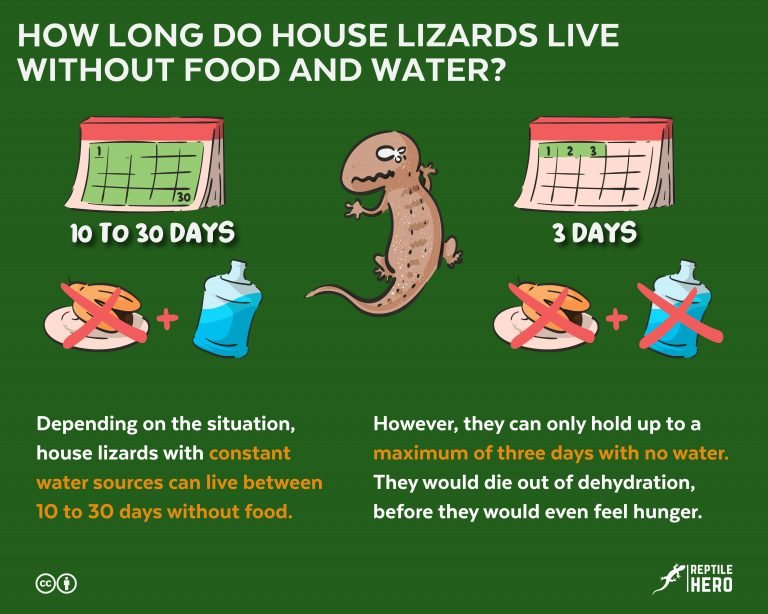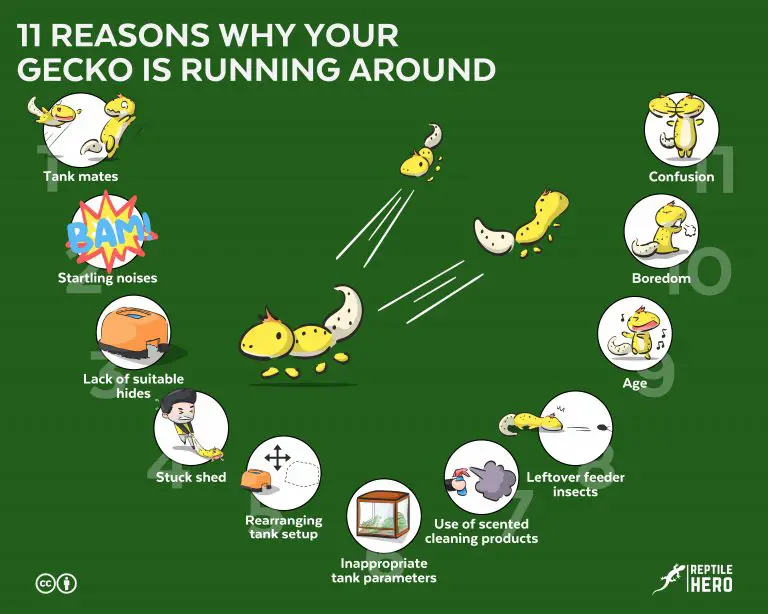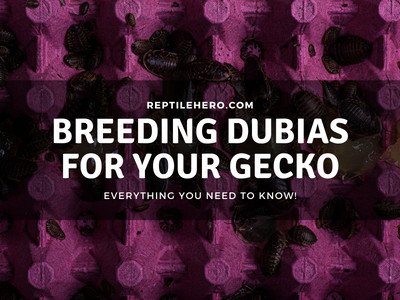Is Cardboard Safe for Geckos? Should You Use It?
I always find fun and interesting DIY projects for gecko tanks using cardboard over the internet. Many like doing cardboard hides and decors since they are cheap—even free if you recycle the ones you already have at home! But is it really as harmless as we all think it is?
Cardboard is generally safe to use in gecko tanks as it is a plant-based product that is biodegradable. However, it will last longer in arid set-ups of leopard geckos than in humid set-ups of geckos where it can get moist and so require frequent replacement.
Although cardboard does have adhesives in it, that only really refers to a mixture of water and starch. But it still isn’t the best material for enclosures in the long run. Find out why by reading on!
Can Cardboard Hurt Your Geckos? (What is It Made Of?)
Using cardboard in gecko keeping does not pose any immediate dangers to geckos as it is generally considered non-toxic.
Other names used to refer to cardboard include paperboard, pasteboard, and corrugated board. Commonly, plant fibers from wood are processed into a pulp by mechanical grinding and then bonded using an all-natural adhesive made from water and starch.
Then it gets formed into sheets and the water gets squeezed out of it. Finally, it gets cut and folded into various packaging boxes.
So basically, cardboard is just like paper but it’s much thicker and more durable. These characteristics are why they are prized materials used for all sorts of packaging, from food to electronics.
Although different applications require specific standards to be met for safety, it’s largely considered a completely eco-friendly material. It doesn’t present any danger to humans, animals, and the environment.
The only time cardboard can be a cause for concern is when it is being manufactured [1]. Dust that accumulates while making cardboard, in particular, may cause respiratory, eye, and skin irritation under prolonged exposure.
So unless you use old dirty cardboard boxes—or bring your pet reptile to a cardboard factory—your gecko won’t be put in any danger.
Do Geckos Eat Cardboard? What Will Happen If They Do?
No occurrences of geckos eating cardboard have been reported.
More importantly, I don’t think any reptile will deliberately eat mouthfuls of it—especially since it doesn’t move or smell like any regular insect feeder.
If you do see a gecko licking cardboard, remember that such behavior isn’t necessarily connected to eating. Your gecko is probably just sniffing and inspecting it.
But in the unlikely event that your gecko does ingest cardboard, it will get an upset stomach. This is because reptiles, in general, find it difficult to break down cellulose-rich food items (e.g., leafy vegetables) and materials—regardless if they are insectivores or frugivores [2].
5 Drawbacks of Using Cardboard for Geckos
Many experienced gecko keepers and breeders do not like using cardboard in gecko tanks for long-term use because:
- It gets wet easily
- It becomes weak in time
- It requires regular replacement
- It can catch on fire
- It may be eaten by feeders
Personally, these are all the same reasons why I don’t like using cardboard in any reptile enclosure as well.
1. It Gets Wet Easily
Like tissues and kitchen towels, cardboard doesn’t hold up to water and moisture well. It’s very absorbent.
So if you are keeping gecko species that require moderate to high humidity levels, the cardboard will easily and quickly get soft and soggy from the moisture.
2. It Becomes Weak In Time
As cardboard is easily affected by environmental conditions, such as humidity, in gecko tanks [3]. Its durability significantly decreases as time goes by.
The longer you keep it in a gecko tank, the weaker cardboard gets. You could easily test this out yourself.
Just leave a piece of cardboard in a room or closet in your house that gets very humid for a few hours or days. Once you take it out again, you will see how pliable it has become—no matter how thick it is.
With burrowing species like leopard geckos, you could end up with shredded soggy cardboard all over your tank.
3. It Requires Regular Replacement
Since cardboard is absorbent, it also gets soiled quite easily. Others gecko owners have even noticed that their pet geckos seem to use cardboard as litter areas.
Despite not being as smelly, gecko poop and pee still don’t smell pleasant—especially in a heated humid environment, which most enclosures are.
Because of this cardboard can never be a permanent provision in gecko tanks. They need to be replaced as soon as they get soiled. Otherwise, you will be facing mold and bacteria growth.
4. It Can Catch On Fire
Similar to other paper materials, cardboard is flammable. But unless it’s directly touching a heat lamp, you normally won’t see it cause any fire in gecko tanks.
Hence, you should never place cardboard close to any heating device. Indeed, if the cardboard gets displaced by the gecko, it can accidentally touch the lamp and start a fire.
Discover more on heat safety in our article on the best heating setup for geckos.

Besides that, cardboard will only burst into flames if it’s in an environment with temperatures over 800°F or 426.67°C [4].
Thermal Property of Cardboard in Gecko Tanks
Unlike slate, cardboard doesn’t conduct heat well. So it won’t help your gecko warm up no matter how long it lays on top of it.
On the other hand, similar to styrofoam it is a good insulator. As such, it can be used to keep the heat inside your gecko’s tank.
5. It May Be Eaten by Feeders
Roaches are voracious eaters and they eat just about anything-including cardboard [5]! So if you end up leaving uneaten roaches in your gecko’s tank, they may end up eating the cardboard creations you placed in there for your scaly little pet’s enjoyment.
Detritivores or custodians in bioactive tanks like isopods may also eat decomposing cardboard if it’s in the tank. Then again, it generally takes a few months or years for clean cardboard materials to naturally break down.
Learn more about these organisms in our article on making bioactive substrates.
Why Do People Use Cardboard for Their Geckos? (5 Reasons)
Some gecko owners like using cardboard in their gecko’s tank because:
- It is a cheap material
- It is readily available
- It is easy to work with
- It is highly customizable
- It is a fun project for kids
Since we’re already aware of the downsides there are to using cardboard, let’s explore why other people still like using it for their geckos.
1. It is a Cheap Material
Compared to thick polystyrene foam, more commonly known as styrofoam, cardboard is a very cheap option to use for gecko tank decors and structures.
That is, of course, unless you already have ones you can recycle at home.
For instance, a dollar can get you 2–3 large sheets of cardboard. Conversely, one thick sheet of styrofoam can cost you around 2–5 bucks.
2. It is Readily Available
You can also easily find cardboard around your house—especially if you get a lot of things delivered.
So rather than just trashing these cardboard boxes straight into the bin, why not reuse and recycle them?
From shoe boxes, cereal boxes, egg crates, toilet rolls, to kitchen towel cores, you have a lot to choose from! So even if you do have to replace it often, you can do so for virtually free.
3. It is Easy to Work With
Unlike other common materials used for DIY gecko tank projects, such as foam, you don’t need special tools like drills or foam cutters when using cardboard.
Sharp scissors and some silicone will work just fine for a variety of cardboard creations. Others also use box cutters and hot glue.
4. It is Highly Customizable
If you recall what I said earlier, cardboard can actually be remolded if it gets wet. So you can reshape it however you want by simply moistening it and then letting it dry under the sun.
What’s even better is that you won’t have to pulverize or shred it beforehand for your cardboard to be molded again.
Plus you can also paint it to suit a particular theme you have going in your gecko’s tank or make it bright and colorful as much as you like. Just make sure that the paint you are using if
A few gecko pet parents have also found that humidity and replacement issues can be easily dealt with after cardboard creations are sealed with a few coats of non-toxic sealant. This one on Amazon, in particular, is a common choice for reptile tank projects.
5. It is a Fun Project for Kids
If you are helping your little ones to take care of their pet gecko or if you want to start a gecko tank project with younger relatives, then consider using cardboard.
Such projects will not only be fun but will also help with teaching kids what things are safe for geckos.
Find out what benefits kids can reap from gecko-keeping in our article about why geckos make great pets.
9 Ways Cardboard Can Be Used for Geckos!
Overall, cardboard has been used by numerous gecko owners and breeders for a variety of purposes. This includes:
- Hides
- Decors
- Structures
- Inserts
- Ramp
- Mazes
- Playpen
- Transport
- Housing
Cardboard can not only be used in providing enrichment for geckos but also for more practical reasons that will ensure they feel safe and secure. Read on to find out more!
1. Hides
Oftentimes, cardboard in the form of packaging boxes and tissue rolls are used as temporary hides for a variety of geckos. This is true for both terrestrial species, like fat-tailed geckos, and arboreal ones, like gargoyle geckos.
However, cardboard gecko hides are typically used only for juvenile geckos and those that are in hospital set-ups.
Personally, I like using other materials like foam and potter’s clay for DIY gecko hides.
2. Decors
Cardboard can be used to create a variety of naturalistic and themed decors in gecko hides.
So if you dabble in the arts and would like to create a unique piece for your previous gecko’s enclosure, then the sky’s the limit!
Need some inspiration?
Well, I have seen other pet parents create improvised climbing structures from cardboard egg cartons by cutting out holes in them and also gluing rocks onto them.
3. Structures
I have also come across a few interesting projects other gecko keepers have done for their pets’ tanks. This includes both simple and complicated structures.
From what I’ve seen, interconnected cardboard tunnels seem to be the easiest to create. What I like about this idea over ones built with PVC pipes is that it’s easier to free geckos that have gotten stuck in them.
4. Inserts
I have also come across a few projects where gecko keepers used sheets of cardboard as the base of their gecko tank inserts instead of foam.
But since inserts are generally made for long-term use, the cardboard sheets and cutouts are typically covered in expanding foam and or grout and then sealed. So the project becomes quite costly in the end.
Still, these projects are great since they inspire newbies to provide as much as they can with what little materials they have. But personally, I still prefer foam inserts over cardboard ones.
5. Ramp
One cool thing people do with cardboard that I recently saw was a tank ramp. Some even create a stair-like structure for a more challenging way for geckos to exit and access their tank.
By placing this at the door of a gecko’s enclosure before and after their out-of-tank exploration, the gecko can decide when it wants to go out or go back inside!
6. Mazes
Another cool project people often use cardboard for is a gecko maze. This can either be set up inside their tank or outside.
Some owners prefer using only cardboard to build mazes for their geckos, while others like to add other things, such as plants and balls, for added enrichment.
7. Playpen
Playpens can also be created with cardboard. This would be much cheaper than buying those cloth and mesh tents for pets.
However, it would be difficult to stop arboreal geckos from jumping and escaping from open playpens.
8. Transport
Whether it’s for just a few feet or several miles, cardboard is commonly used when transporting geckos from one place to another. Admittedly though, cardboard boxes cannot be used for carrying geckos during travel on their own.
The same is true for shipping geckos and other reptiles. They are first placed into plastic containers with ventilation holes and then put inside foam-lined boxes [6].
Other than that, you can use the cardboard cores of kitchen towels to catch and carry your geckos. I recommend doing this for geckos that are either not yet used to being handled or those that are aggressive and bite, like the infamous tokay gecko.
9. Housing
Last but not the least, cardboard boxes can be used as temporary housing for geckos. For example, if you have to clean a gecko’s vivarium, you can keep it in a small box with small air holes for ventilation.
The darkness and damped sounds from inside the cardboard box will help geckos feel safer and less stressed [7].
Further Questions
How long can a lizard live in a cardboard box?
A lizard can live for up to 3 months in a cardboard box with little to no source for food and water. To be more specific, one Asian house gecko was found to have survived traveling from China to Kent for 3 months in a cardboard box. However, it was noticeably emaciated.
Are cork tubes and flats better than cardboard for gecko tanks?
For long-term use in gecko tanks and other reptile enclosures, cork bark hides and decors are better than those made from cardboard and other paper materials. Mainly, it is because cork is resistant to fire, moisture, and mold growth.
Can you use cardboard as substrate in gecko tanks?
Although cardboard is sometimes shredded for animal bedding, it is not recommended for geckos and most other reptiles. Using either paper towels or soil-based substrate mixes is advised.
What substrate is best for geckos?
Most reptile experts and experienced keepers believe that soil-based loose substrates that closely mimic a gecko’s natural substrate are the best option in captivity. Such a substrate will allow them to perform natural behaviors such as burrowing and egg laying.
Summary of Is Cardboard Safe for Geckos?
Despite being a safe material for geckos, many others dislike using cardboard for tank projects as it easily gets wet, weakens in time, needs to be replaced often, can catch on fire, and may be eaten by roaches and detritivores.
However, cardboard is also cheap, widely available, easy to use, and customizable. All of these combined make this material a great choice for doing DIY gecko tank projects with kids.
Sources
[1] https://labs.art.fsu.edu/wp-content/uploads/2021/07/corrugated_sheet_sds.pdf
[2] https://www.intechopen.com/chapters/52743
[3] https://scholarworks.rit.edu/cgi/viewcontent.cgi?article=1066&context=japr
[4] https://sconfire.com/paper-at-what-temperature-does-burn-ignite-and-combust/
[5] https://www.jpost.com/science/article-702962




![Got a Gecko With a Bad Stuck Shed? [3 Problems and 9 Solutions]](https://www.reptilehero.com/wp-content/uploads/2021/10/Help-gecko-shed-skin-cc-768x614.jpg)

![What Do Dwarf Geckos Eat? [With Examples + 6 Things To Remember]](https://www.reptilehero.com/wp-content/uploads/2021/12/dwarf-gecko-eats-cc-768x614.jpg)
